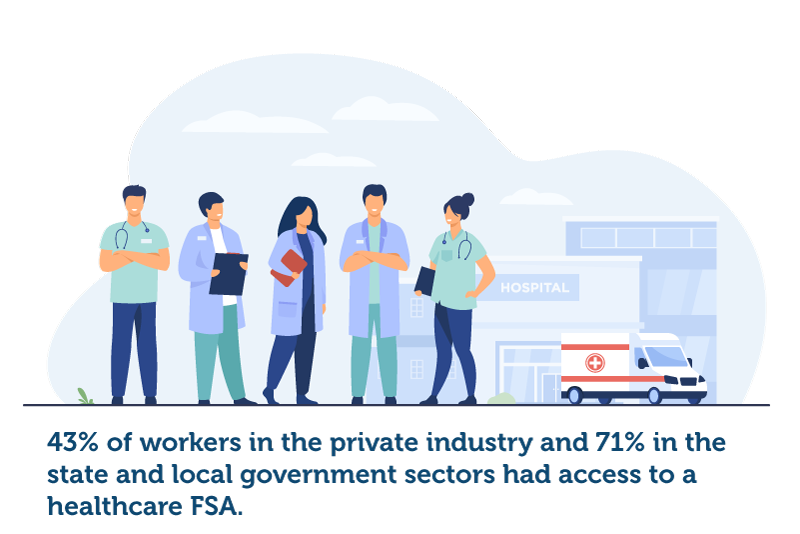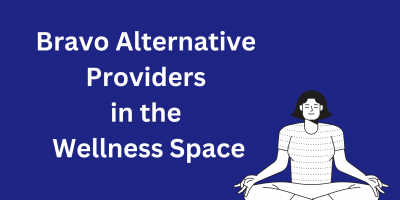
Why are Wellness Programs Important for Employees?
Embrace employee wellness programs’ significance in employee health and wellbeing.


Managing Partner at MASC Medical

Founder of Wellness 360 Technologies. Inc.

Marketing & Content Manager at London Office Space

Founder & CEO of Cicinia

CEO and Founder of Breadnbeyond

Co-Founder of Milkwhale

Digital Marketing Manager of Explainerd

Owner of Nootka Saunas

Marketing & Digital Media Manager at Achieve TMS East

Owner & Principal Broker of K5 Mortgage

Founder of Aspiring Families

Career Expert at CareerAddict
The events of recent years have completely changed the employee benefits landscape shooting up the importance of bringing forth flexible benefits. This article illustrates the concept of flexible benefits and provides examples to understand better what they are, outlining their positive and negative sides.
Additionally, it offers insights from experts on why and how each company should go about changing its current benefits plan and putting forward a flexible one instead.
Because in these new times, when digitalization is on the rise and the workplace is going through a constant transformation, change is inevitable.
Redesigning the workplace is a process that every business will have to go through eventually.
Ebnu Sudarso, Co-Founder of Milkwhale, agrees that incorporating flexible benefits should play a significant role and adds that “To thrive in a competitive landscape, businesses need to keep up with the times and put their employees first.
This can be done by helping employees maintain their well-being and health by prioritizing work-life balance. To make this a reality, flexible benefits must be in place.”
In fact, according to a recent study, 81% of companies reported changes in the benefits their workers are using, and as a result, 90% decided to change the packages they offer.
These statistics only reinforce the current necessity for employers to be bold and advanced with their benefits programs.
As Marc Adam, Managing Partner at MASC Medical, says, “Redesigning your workplace with flexible benefits is crucial in times like this. Not only to support your diverse workforce but to improve employee experience and to meet the changing needs of employees.”

It can be said that employee benefits have been around for almost 400 years.
Their foundation lies in the first pension plan provided to veterans of the Revolutionary War.
Later, having realized that benefits are a great strategy to attract and retain talent, employers started offering profit sharing, health insurance, paid vacation time, and parental leave.
Today, almost 80% of employees receive some benefits, and it can be anything from free snacks to a gym membership.
Until now, employers dictated how a benefits plan would look for their workers. However, the pandemic made workers reevaluate their priorities and more aware of what benefits are valuable to them.
Joanna Zambas, a career expert at CareerAddict, also notices that employees are now putting value on different benefits. She writes, “Post-pandemic, we have noticed a shift in jobseeker’s requirements. Besides good pay, employees are now placing a lot of value on flexible working environments.”
This is where flexible benefits come into play.
It is still up to companies to provide employees with options, but the “flexibility” comes from enabling workers to choose which benefits to include in their plans according to their needs.
And it is the idea of flexibility that, as Harrison Sharrett, Marketing & Content Manager at London Office Space, states, has taken up much of the conversation in the pandemic era.
“Having now emerged at the other end, the flexible benefits that grew in popularity over the months that employees spent isolating at home have become almost inescapable.
Now, workplaces across the globe are having to come to terms with the fact that their workers expect to be provided with a level of flexibility that might’ve been considered wishful thinking just some short years ago.”

Flexible benefits can range in many different areas, so the number of options is vast. Most of the time, they are ancillary and are usually designed to provide additional value to the more popular and vital benefits.
According to Andre Oentoro, CEO and Founder of Breadnbeyond, “some of the most popular benefits include health insurance, retirement savings plans, and flexible spending accounts. Also, consider offering other perks such as child care, tuition reimbursement, and commuter benefits.”
These benefits can be divided into three categories contingent on what kinds of needs they are associated with.
Operational benefits or benefits associated with work include:
The company where Harrison Sharrett works offers its employees the opportunity to decide on their working environment and starting times.
He explains, “This changes from employee to employee, with client-facing roles expected to maintain regular working hours to be reachable.
For others, such as web designers and digital marketing professionals, we provide the flexibility to mold working hours around life commitments.
This has been highly successful, resulting in boosted productivity, better employee retention, and improved work-life balances for our employees.”
Health and wellness benefits that are connected with home life involve:
Retirement and savings benefits are related to future planning and encompass:
Nevertheless, many things need to be considered when deciding what to offer.
The workplace is undergoing a metamorphosis that drastically changes employees’ privations, making it even harder for employers to determine what to make available.
Thus, to achieve maximum results, Harrison Sharrett believes it is crucial “to connect with each employee to determine their ideal working style. This allows us to craft unique benefits designed to maximize their potential, allowing them to grow alongside the business and ultimately take us to the next level.
Examples of these benefits include training sessions for employees eager to upskill, digital literacy classes for those still adapting to the idea of remote work, gym memberships for active employees, and much more.”
Every employee is different, meaning each has unique needs and wants.
For that reason, over half of the workforce want to have the opportunity to design their benefits package. Thus, companies that recognize the diversity among their workforce and care to provide relevant fringe benefits offer a flexible benefits plan.
A flexible benefits plan is a type of cafeteria plan benefit under Section 125 of the Internal Revenue Code. As the name suggests, it offers workers a choice of what benefits they want to include in their scheme.
The employer makes the contributions toward the plan, but employees can also make pre-tax contributions toward a benefit that the employer doesn’t fully cover.
Typically, staff receives compensation in the form of credits, which most often amount to dollars, which they can allocate toward the benefits they would like.
Albeit workers have the freedom to structure their plan, it is not entirely flexible since it entails some core benefits that people cannot opt-out of.
But, as Caitlyn Parish, Founder, and CEO of Cicinia, puts it, offering essential benefits is the first and most vital step in creating a well-designed package.
She states, “When creating a flexible benefits package, there are a few points to consider. First, you must confirm that all essential benefits are provided. This covers items like retirement savings and health insurance.
Second, you must provide employees with a wide range of options for their benefits package. While having too few options might be frustrating, having too many options can be overwhelming.”
Hence, a flexible benefits plan isn’t ideal if it offers multitudinous benefit options to choose from. Suppose that is the case; it will only create confusion and make it even more difficult for employees to develop a plan that perfectly suits their needs.
As owner/principal broker of K5 Mortgage, Konstantin Kuligin remarks, “The very foundation of flexible benefits is that employers create a mix of benefits that suit employee preferences and needs.

Creating a flexible benefits plan is not at all an easy task.
It requires meticulous planning, research, and analysis to have the necessary data to devise a scheme that will accommodate the different employee demands.
Like many other experts, Marc Adam also agrees that “the first step is identifying what employees want and need. Use surveys or utilize one-on-one time to ask what’s important to them.
Then begin redesigning your workplace flexible benefits based on the data you collect.”
Therefore, it is evident that the essential part that should precede the plan’s creation is communication.
Discussing the work-life balance with employees and finding their thoughts on what they deem vital provides incredible insight into what would be the best offer of benefits for each company and its workforce.
Digital marketing manager of Explainerd, Natasha Rei, agrees with this sentiment, stating, “Employers should encourage open communication about work-life balance at the office. That way, employees will feel comfortable discussing their needs and expectations around work-life balance with their employer.
This open dialogue will help identify areas where flexibility is needed and possible solutions that work for both parties.”
Remember that such discussion will probably generate many desired benefits depending on the workforce’s size and diversity.
However, including all is not the best strategy since only 27% of workers enjoy making choices and looking for the best option, whereas 57% who are happy to make a choice feel confused if there are too many options.
Following this, Caitlyn Parish outlines two more steps towards creating a plan. According to her, “the third step is to balance the benefits and costs. Companies shouldn’t be overspending on the program, but employees should feel like they are receiving a decent value on their benefits.
Finally, you must ensure that the program is easy to use and understand. Flexible benefits packages can be complex, so it is important to provide employees with clear instructions and support.”
Ensuring employees understand what they are offered is as prominent as providing suitable options. According to a study, 66% of Americans need assistance to understand their benefits, and 54% of Millennials lack understanding.

As previously mentioned, workers receive credit or cash in a flexible benefits plan. However, another opportunity besides purchasing benefits is to put the unused amounts towards flexible spending accounts (FSAs).
These accounts allow employees, and employers, to make pre-taxed contributions of up to $2,500 and can help save up to about $1,000 of payroll taxes in a year.
Depending on the type of flexible account, the funds can be used to cover several expenses, i.e., medical ones and child or adult care costs.
According to the BLS, 65% of state and government staff and 39% of workers in the private industry had access to a dependent care flexible spending account in 2021.
This type of account is used to pay for eligible dependent care expenses. These include expenditure on caregiving for a child under the age of 13, before or after school care, babysitting, and daycare or preschool.
Additionally, it covers costs for caring for a spouse or a relative who is incapable of self-care and lives in the employee’s home.
Employees who want additional coverage for medical expenses in addition to their health insurance can take advantage of the healthcare flexible spending account.
This type’s funds can be used to pay for medical, dental, and vision care expenses, including prescription drugs, surgery, and medical equipment not covered by another plan.
The BLS data shows that in 2021, 43% of workers in the private industry and 71% in the state and local government sectors had access to a healthcare FSA.

Employees already enrolled in an HSA-qualified high-deductible health plan with a Health Savings Account (HSA) can increase their funds by contributing to a limited-purpose flexible spending account.
It is possible to have both HSA and a limited purpose FSA only if the employer allows it.
This account covers eligible costs associated with dental and vision care services and products. In some cases, the funds might also be used to pay regular medical expenses, depending on the rules set by the employer.
Offering a benefits plan that blankets all employees is now a thing of the past. For several reasons, it is more beneficial than ever to tailor benefits that meet the employees’ needs.
To stand out in today’s competitive market, businesses must find a unique way to recruit and retain talent. Flexible benefit plans help them do precisely that.
In fact, research shows that 72% of the workforce will stay loyal to a company if it lets them customize their benefits to meet their needs.
The marketing and social/digital media manager at Achieve TMS East, Dillon Hammond, agrees that the concept of flexible benefits influences retention and is a win-win situation for companies and their employees.
He reckons that “with flexible benefits to choose from, employees know that their employer offers more recognition than most other companies. And since it is in the form of tangible benefits, they understand that this is more than just lip service too.”
Having control over their benefits shows workers that executive leadership cares about their needs enough to let them create a plan that suits them.
In return, this creates positive feelings in employees, with 88% of those who feel valued report being more engaged in their work, thus boosting their performance.
Kris Harris, the owner of Nootka Saunas, agrees that there is a correlation between high-value benefits and performance.
“One of the many advantages of introducing flexible benefits for employees is that you can associate certain benefits with different performance levels. This way, you can motivate employees to go beyond average parameters and register impressive productivity levels. With the knowledge that high-value benefits are at stake, employees will be even more inclined to deliver their best.”
It is up to businesses to limit how much the workforce can spend on their flexible benefits. This way, when it is time for budgeting, the company can calculate precisely how much it will spend on benefits.
Additionally, the taxes on these benefits are deductible.
This means that not only will it save money for the company, but it will also increase the savings for the workers.
A flexible benefits plan can have significant advantages for all parties.
Srini Vanukuri, founder of Wellness 360 Technologies. Inc., agrees that “offering employee benefits is the key to workplace engagement, retention, productivity, and overall business growth.
However, they must meet the specific interests and requirements of the workforce.
With employee needs evolving constantly, employers must redesign their workplace benefits to align with the latest trends like digital health solutions, flexible working schedules, financial wellness programs, positive workplace culture, DEI programs, and more.”
Albeit, as there are advantages, there are also disadvantages to having a flexible benefits plan. Indeed, businesses must know that no plan completely satisfies both employers and employees and has no downsides.
Azmaira Maker, Ph.D., and founding director of Aspiring Families, agrees with this by saying, “One cannot expect the concept of flexible benefits to work like a magic wand in the workplace.
Employers have to know that not every scenario will see employees delivering on the expectation of higher productivity only because of flexible benefits.
Also, while the introduction of flexible benefits may be seen as an appreciable move by employers, some employees may simply view it as a right that has been a long time coming.”
So, let’s look at the drawbacks of implementing a flexible benefits plan.
If a company already has set up a traditional benefits plan, changing to a flexible one can be costly. It Is time-consuming to design a plan tailored to everyone’s needs, and it costs money.
Additionally, setting it up can bring out new expenses since, in some cases, the company might need new technology to implement and maintain the plan.
Therefore, as Azmaira Maker points out, “it is important that employers work closely with employees to not only float a well-balanced program but also counsel employees on how it has been designed with workplace efficiency in mind.”
A flexible benefits plan requires much more time and resources than the traditional umbrella plan.
The more benefits the plan is comprised of, the more time the administrative staff will need to make sure that each one separately complies with the current federal, state, and local laws and regulations.
With a flexible benefits plan, the employee sets aside a certain monthly amount that goes towards their flexible benefits.
At the end of the year, if the worker hasn’t spent the money, they don’t have a chance to recoup it, or they can recoup just a certain amount and transfer it to next year’s savings.

The transformation of the workplace has also transformed employees’ needs.
As the workplace becomes more diverse, so are the flexible benefits that workers require. Thus, a flexible benefits plan is a powerful tool that can help satisfy all involved parties’ needs and improve recruitment and retention.
Harrison Sharrett concurs this by stating, “Both flexible working models and flexible benefits are becoming staples in many workplaces across the globe, as businesses look to retain top talent amid the Great Resignation.
Expect to see businesses continue to look to top each other, as demand for qualified employees continues to rise in the future.”
Browse our curated list of vendors to find the best solution for your needs.
Subscribe to our newsletter for the latest trends, expert tips, and workplace insights!

Embrace employee wellness programs’ significance in employee health and wellbeing.

Bravo may be a comprehensive provider, but the following wellness alternatives introduce features, tools, and focus areas that address a broad spectrum of employee needs and employer objectives.

Explore crucial employee wellness statistics to enhance workplace well-being and productivity.

In this era of digital transformation, technology has emerged as a powerful catalyst, amplifying the reach and impact of employee wellness programs in the workplace.
Used by most of the top employee benefits consultants in the US, Shortlister is where you can find, research and select HR and benefits vendors for your clients.
Shortlister helps you reach your ideal prospects. Claim your free account to control your message and receive employer, consultant and health plan leads.